Abstract
The segregation of classical and nonclassical 21-hydroxylase deficiency (21-OHD) and its linkage to HLA-B was investigated in 220 families. First, the surprisingly high frequency of the nonclassical 21-OHD gene estimated elsewhere was confirmed using a different methodology which avoided particular assumptions concerning the classification of an individual's genotype. In the present study the gene frequency was found to be .103 +/- .020 in an ethnically pooled sample and was as high as .223 +/- .062 among Ashkenazi Jews. Second, the segregation analysis of families ascertained through a nonclassical 21-OHD proband and those ascertained through a classical 21-OHD proband showed essentially identical results. A partial recessive model with no recombination between 21-OHD and HLA-B fitted the data better than did a complete recessive model with approximately 0.5% recombination between 21-OHD and HLA-B. The support for the partial over the complete recessive model depended on the assumed ascertainment probability, an unknown parameter in these data. Four families provided most of the evidence against the complete recessive model. All these included an unaffected sib who shared both HLA-B specificities in common with the affected proband. Possible explanations for the condition in these families include recombination, gene conversion, mutation in one of the parental gametes, or technical errors.
Full text
PDF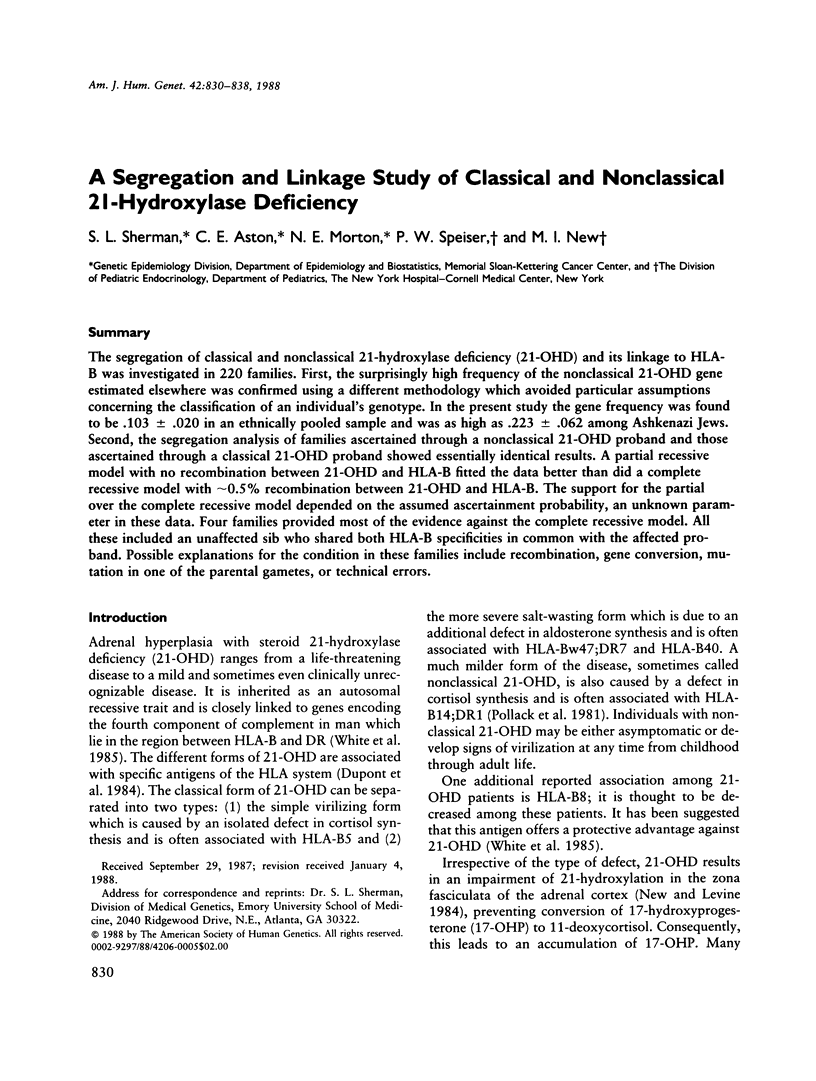
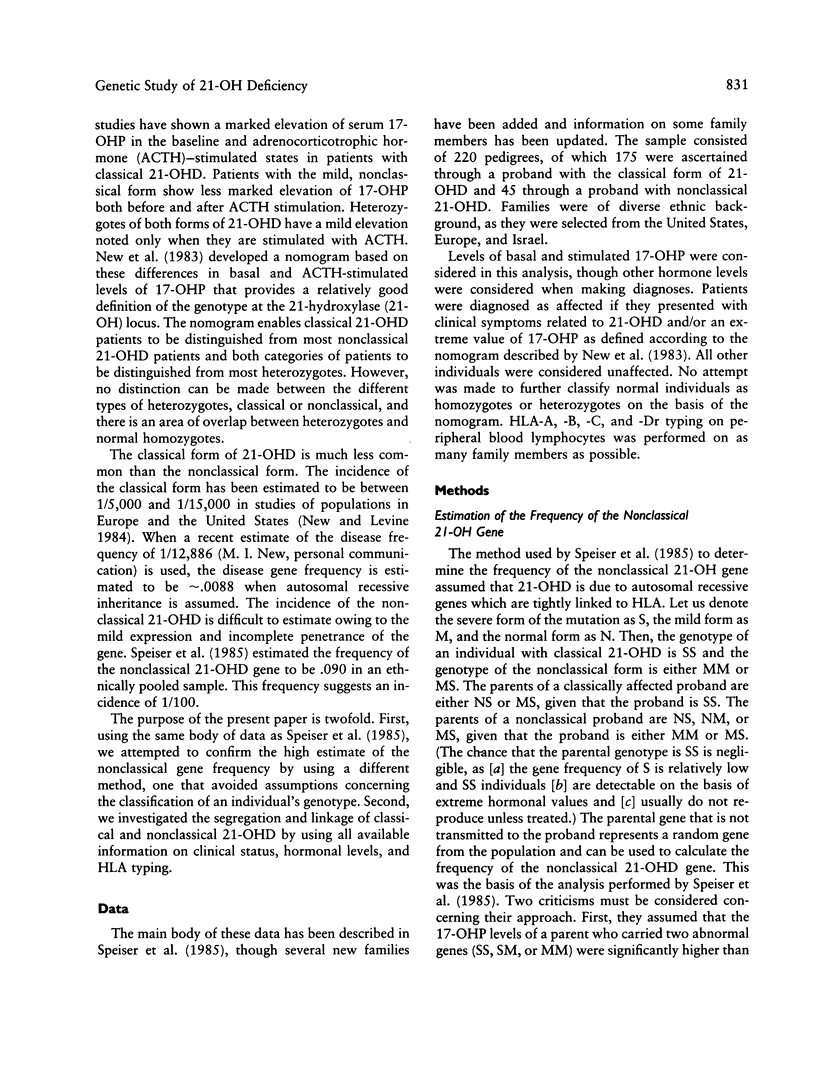
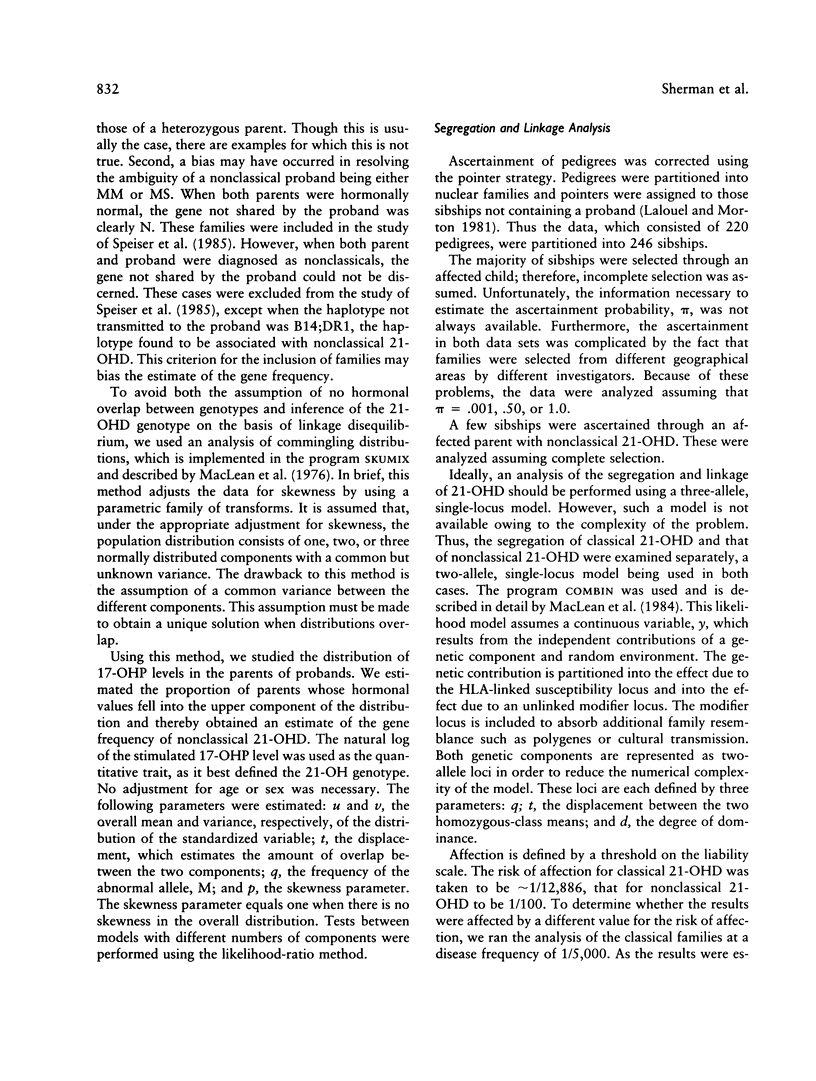
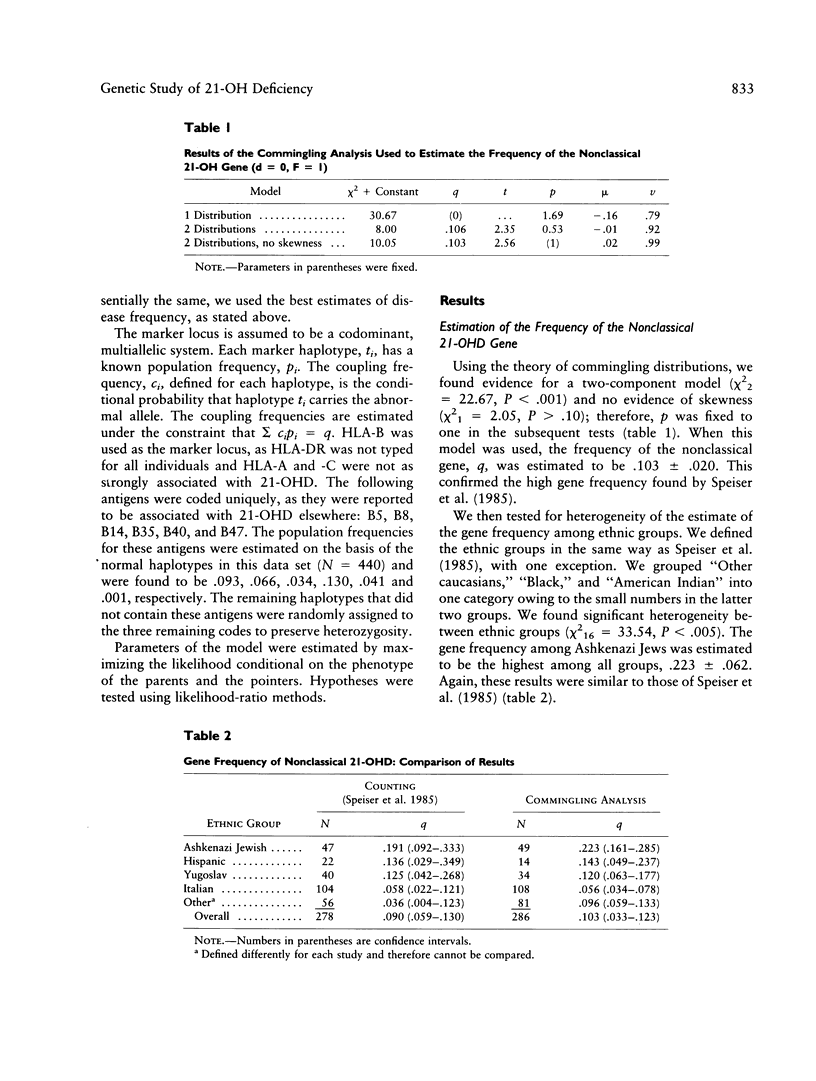
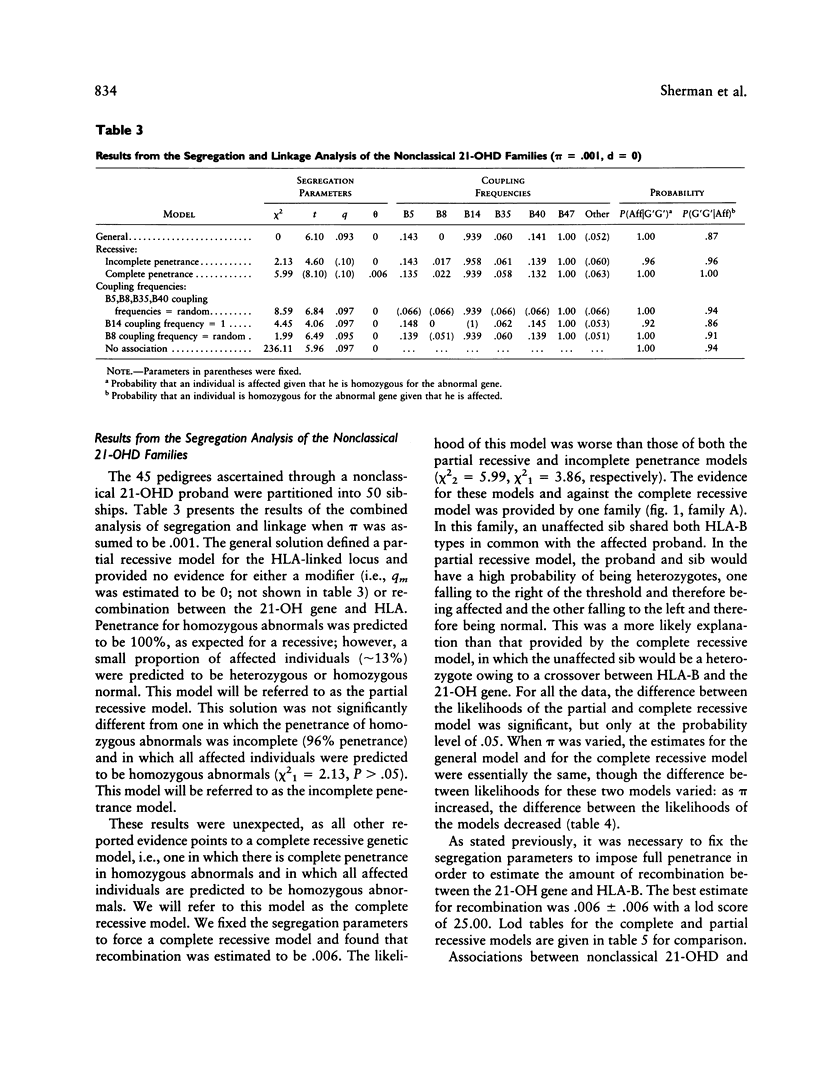
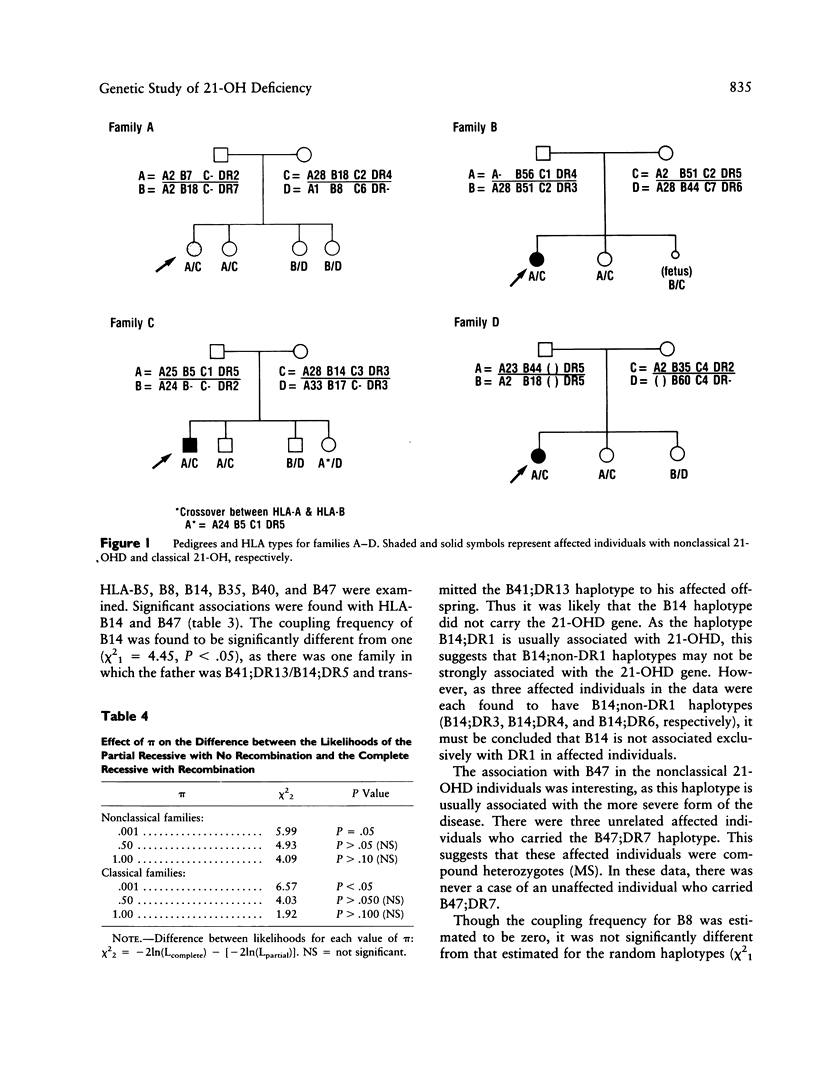
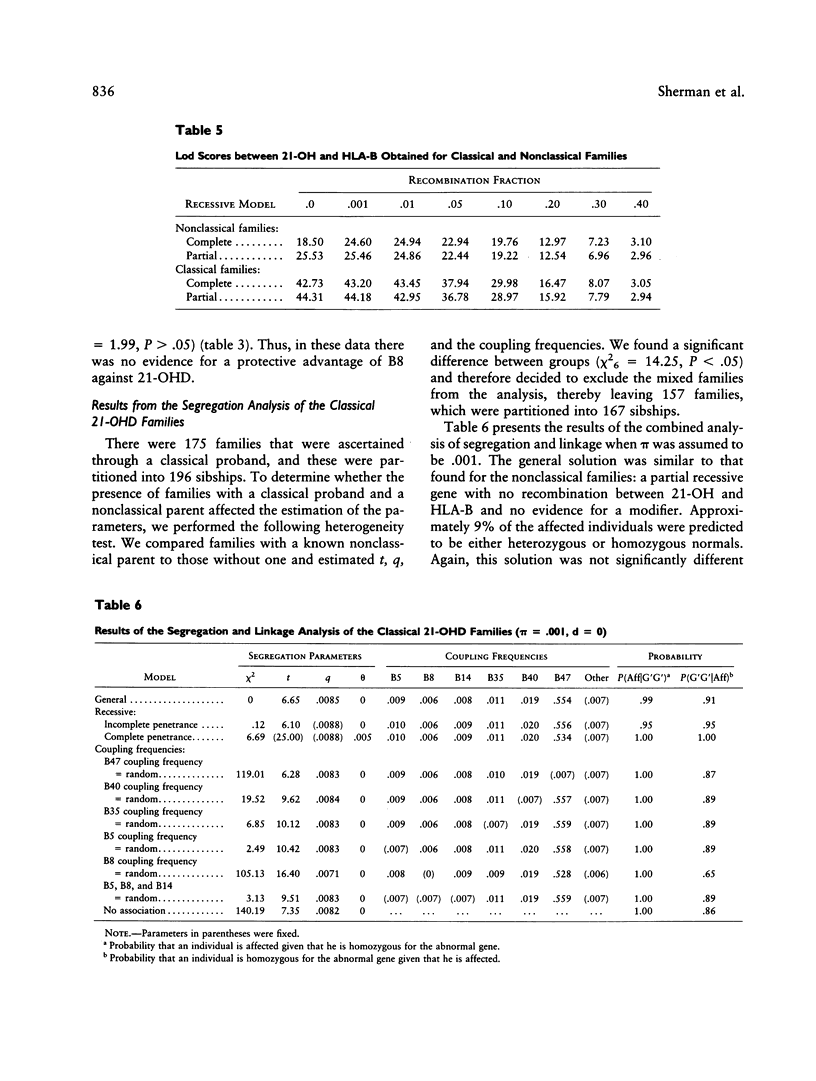
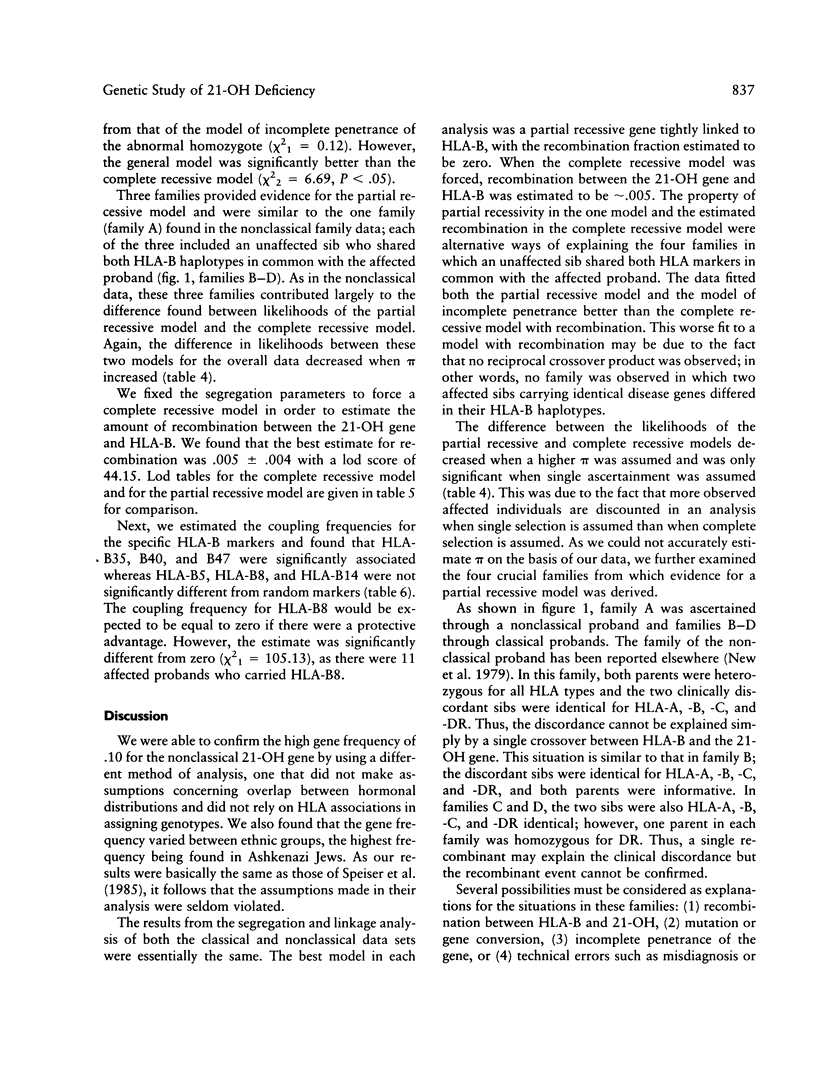
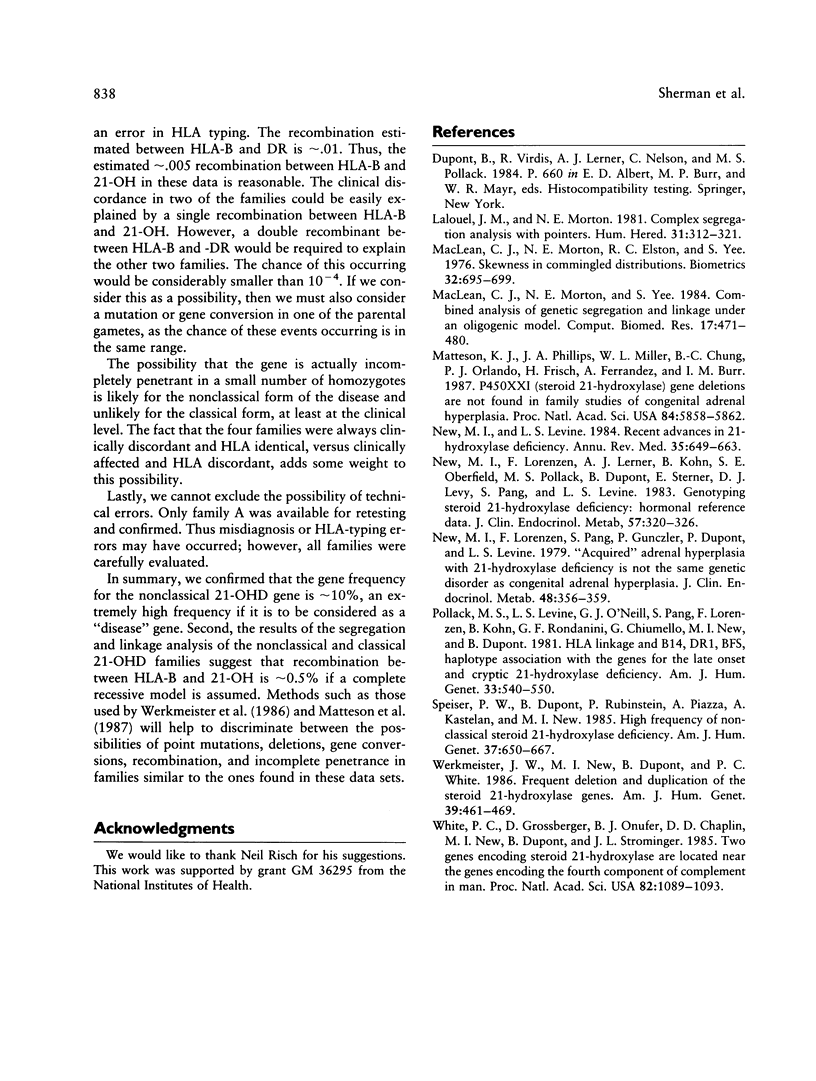
Selected References
These references are in PubMed. This may not be the complete list of references from this article.
- Lalouel J. M., Morton N. E. Complex segregation analysis with pointers. Hum Hered. 1981;31(5):312–321. doi: 10.1159/000153231. [DOI] [PubMed] [Google Scholar]
- MacLean C. J., Morton N. E., Yee S. Combined analysis of genetic segregation and linkage under an oligogenic model. Comput Biomed Res. 1984 Oct;17(5):471–480. doi: 10.1016/0010-4809(84)90013-2. [DOI] [PubMed] [Google Scholar]
- Maclean C. J., Morton N. E., Elston R. C., Yee S. Skewness in commingled distributions. Biometrics. 1976 Sep;32(3):695–699. [PubMed] [Google Scholar]
- Matteson K. J., Phillips J. A., 3rd, Miller W. L., Chung B. C., Orlando P. J., Frisch H., Ferrandez A., Burr I. M. P450XXI (steroid 21-hydroxylase) gene deletions are not found in family studies of congenital adrenal hyperplasia. Proc Natl Acad Sci U S A. 1987 Aug;84(16):5858–5862. doi: 10.1073/pnas.84.16.5858. [DOI] [PMC free article] [PubMed] [Google Scholar]
- New M. I., Levine L. S. Recent advances in 21-hydroxylase deficiency. Annu Rev Med. 1984;35:649–663. doi: 10.1146/annurev.me.35.020184.003245. [DOI] [PubMed] [Google Scholar]
- New M. I., Lorenzen F., Lerner A. J., Kohn B., Oberfield S. E., Pollack M. S., Dupont B., Stoner E., Levy D. J., Pang S. Genotyping steroid 21-hydroxylase deficiency: hormonal reference data. J Clin Endocrinol Metab. 1983 Aug;57(2):320–326. doi: 10.1210/jcem-57-2-320. [DOI] [PubMed] [Google Scholar]
- New M. I., Lorenzen F., Pang S., Gunczler P., Dupont B., Levine L. S. "Acquired" adrenal hyperplasia with 21-hydroxylase deficiency is not the same genetic disorders as congenital adrenal hyperplasia. J Clin Endocrinol Metab. 1979 Feb;48(2):356–359. doi: 10.1210/jcem-48-2-356. [DOI] [PubMed] [Google Scholar]
- Pollack M. S., Levine L. S., O'Neill G. J., Pang S., Lorenzen F., Kohn B., Rondanini G. F., Chiumello G., New M. I., Dupont B. HLA linkage and B14, DR1, BfS haplotype association with the genes for late onset and cryptic 21-hydroxylase deficiency. Am J Hum Genet. 1981 Jul;33(4):540–550. [PMC free article] [PubMed] [Google Scholar]
- Speiser P. W., Dupont B., Rubinstein P., Piazza A., Kastelan A., New M. I. High frequency of nonclassical steroid 21-hydroxylase deficiency. Am J Hum Genet. 1985 Jul;37(4):650–667. [PMC free article] [PubMed] [Google Scholar]
- Werkmeister J. W., New M. I., Dupont B., White P. C. Frequent deletion and duplication of the steroid 21-hydroxylase genes. Am J Hum Genet. 1986 Oct;39(4):461–469. [PMC free article] [PubMed] [Google Scholar]
- White P. C., Grossberger D., Onufer B. J., Chaplin D. D., New M. I., Dupont B., Strominger J. L. Two genes encoding steroid 21-hydroxylase are located near the genes encoding the fourth component of complement in man. Proc Natl Acad Sci U S A. 1985 Feb;82(4):1089–1093. doi: 10.1073/pnas.82.4.1089. [DOI] [PMC free article] [PubMed] [Google Scholar]


